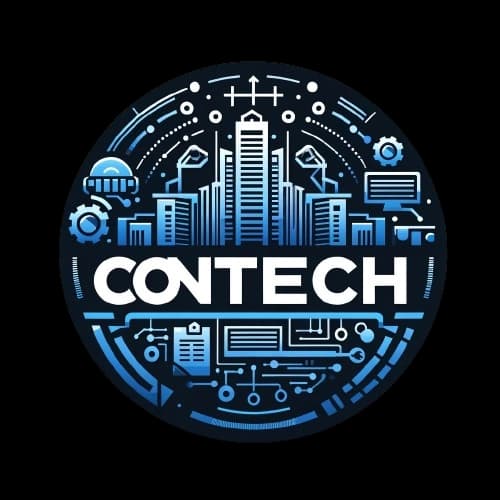- Published on
- Authors

- Name
- Con Tech News
Fusing Nature and Architecture: The Mycelium Concrete Revolution
"Nature never hurries, yet everything is accomplished." — Lao Tzu
Humanity's quest to reshape the environment has often put concrete at the very cornerstone of civilization. Yet, this ubiquitous material comes at a high ecological cost—cement production alone is responsible for nearly 8% of the world’s carbon emissions. Enter mycelium concrete: a fusion of fungi roots (mycelium) and inert substrates to create a building material that can be strong, insulating, and largely biodegradable. In many ways, it stands as a hopeful bridge between architecture and the living world, uniting us with nature rather than simply building on top of it.
Understanding Mycelium-Based Concrete
Mycelium is the intricate, thread-like root system of fungi. Under proper conditions, these filaments branch out and bind with substrates such as agricultural byproducts—like hemp hurd or straw—and even inorganic fillers. When combined with binding agents and traditional cementitious materials in moderation, the result is a mycelium-infused composite that can exhibit both structural integrity and remarkable insulation properties.
Key Advantages
Biodegradability
- Conventional concrete can persist for centuries in landfills. Mycelium components, however, can naturally degrade over time, significantly reducing long-term environmental impact.
Superior Insulation
- The labyrinth of mycelial fibers traps air, providing thermal and acoustic insulation that can outmatch many standard building materials.
Reduced Carbon Footprint
- Mycelium cultivation actively sequesters carbon. By partially substituting high-carbon cement with mycelium-based additives, overall emissions associated with concrete production can be reduced.
Resource Efficiency
- Agricultural byproducts that might otherwise be discarded (e.g., sawdust, straw) find a valuable second life within the composite, minimizing waste streams.
Potential for Regeneration
- In some experimental applications, new fungal inoculations can regenerate damaged portions of the concrete or help seal micro-cracks, extending the material’s service life.
"Look deep into nature, and then you will understand everything better." — Albert Einstein
Construction Process
Substrate Preparation
- Collect agricultural or forestry waste (e.g., wood chips, hemp hurd, straw).
- Sterilize or pasteurize these substrates to ensure controlled fungal growth.
Inoculation & Growth
- Introduce the mycelium culture into the substrate.
- Allow the fungus to colonize the material under controlled humidity and temperature until it forms a dense, interwoven network.
Material Integration
- Mix the colonized substrate with a minimal quantity of cementitious binder, lime, or clay-based binders (depending on design requirements).
- Adjust water content to create a workable consistency suitable for shaping.
Forming & Curing
- Place the mycelium-based mixture into molds or formwork.
- Allow the material to set and partially dry. For larger structural applications, some heat treatments and specialized curing regimens may be applied to ensure stable and consistent strength.
Application & Finishing
- Mycelium concrete can be used in load-bearing walls, insulating panels, or modular building blocks.
- Surfaces can be sealed or left semi-porous, depending on architectural preferences.
Designing with Nature: A Holistic Vision
Unlike sterile cement monoliths, mycelium-based concrete invites us to see structures as living systems. Imagine a building façade that harmonizes with the local ecology—hosting microhabitats for birds or pollinating insects, while the interior stays naturally cool in the summer and warm in the winter. A few progressive design principles include:
- Green Roof Integration: Extend the mycelium concrete to rooftop gardens or living walls, promoting biodiversity and sequestering additional carbon.
- Moisture and Microclimate Management: Make use of natural humidity exchange to regulate indoor air quality, reducing reliance on mechanical HVAC.
- Circular Life Cycles: At the end of a mycelium concrete structure’s functional life, many components can return to the earth with minimal toxic residue.
"In every walk with nature one receives far more than he seeks." — John Muir
By embracing the symbiotic relationship between fungi and our built environment, we can craft habitats that resonate with our planet’s rhythms rather than clashing against them.
Challenges and Future Directions
- Scaling Production: Consistent fungal growth on an industrial scale requires careful monitoring of temperature, humidity, and contamination risk.
- Standardization & Regulation: Building codes and safety guidelines often lag behind innovative materials, meaning extensive testing and documentation are needed.
- Load-Bearing Capacity: While mycelium composites can achieve commendable strength-to-weight ratios, they may require hybrid approaches (i.e., partial reinforcement with rebar or bamboo) for certain structural applications.
- Long-Term Durability: Research continues into fungal strains, pre- and post-treatment methods, and binder combinations that yield optimum longevity while retaining eco-friendly characteristics.
Despite these challenges, a growing body of architects, engineers, and materials scientists see mycelium concrete not just as a niche curiosity but as a viable cornerstone of sustainable construction.
Conclusion
The emergence of mycelium-based concrete heralds a paradigm shift: from purely extractive building methods to regenerative, ecologically integrated architectures. By weaving fungal biology into our construction practices, we reconnect with the age-old truth that nature’s ingenuity is unrivaled—and that we can harness it to create buildings that are secure, resilient, and deeply respectful of the ecosystems they inhabit.
Let our cities evolve into living, breathing habitats—where the barriers between urban infrastructure and the wilderness soften, yielding inclusive environments that benefit all life on Earth.
"We shall require a substantially new manner of thinking if mankind is to survive." — Albert Einstein
Embrace the mycelium revolution—and shape a world where human enterprise flourishes in harmony with the vitality of our shared planet.
